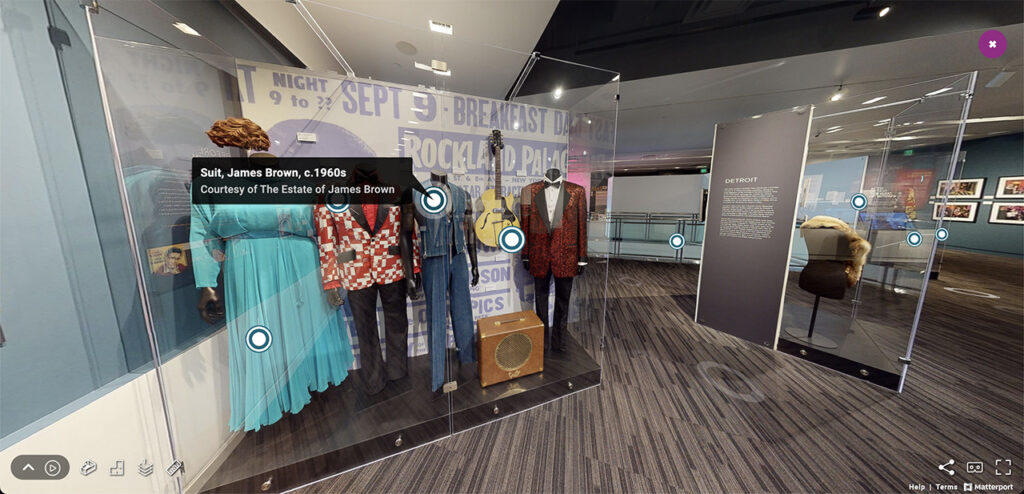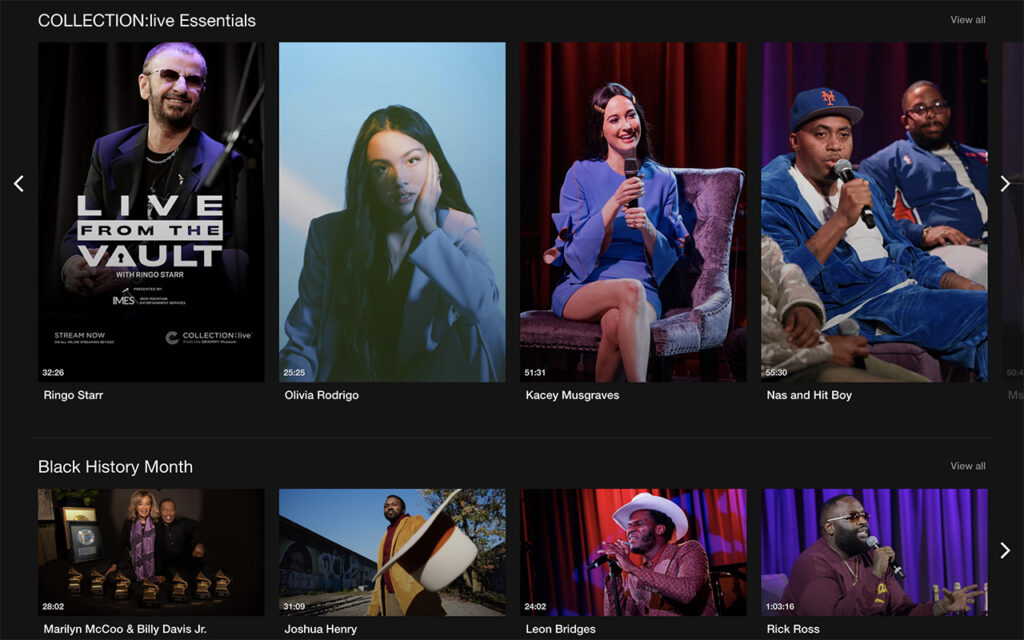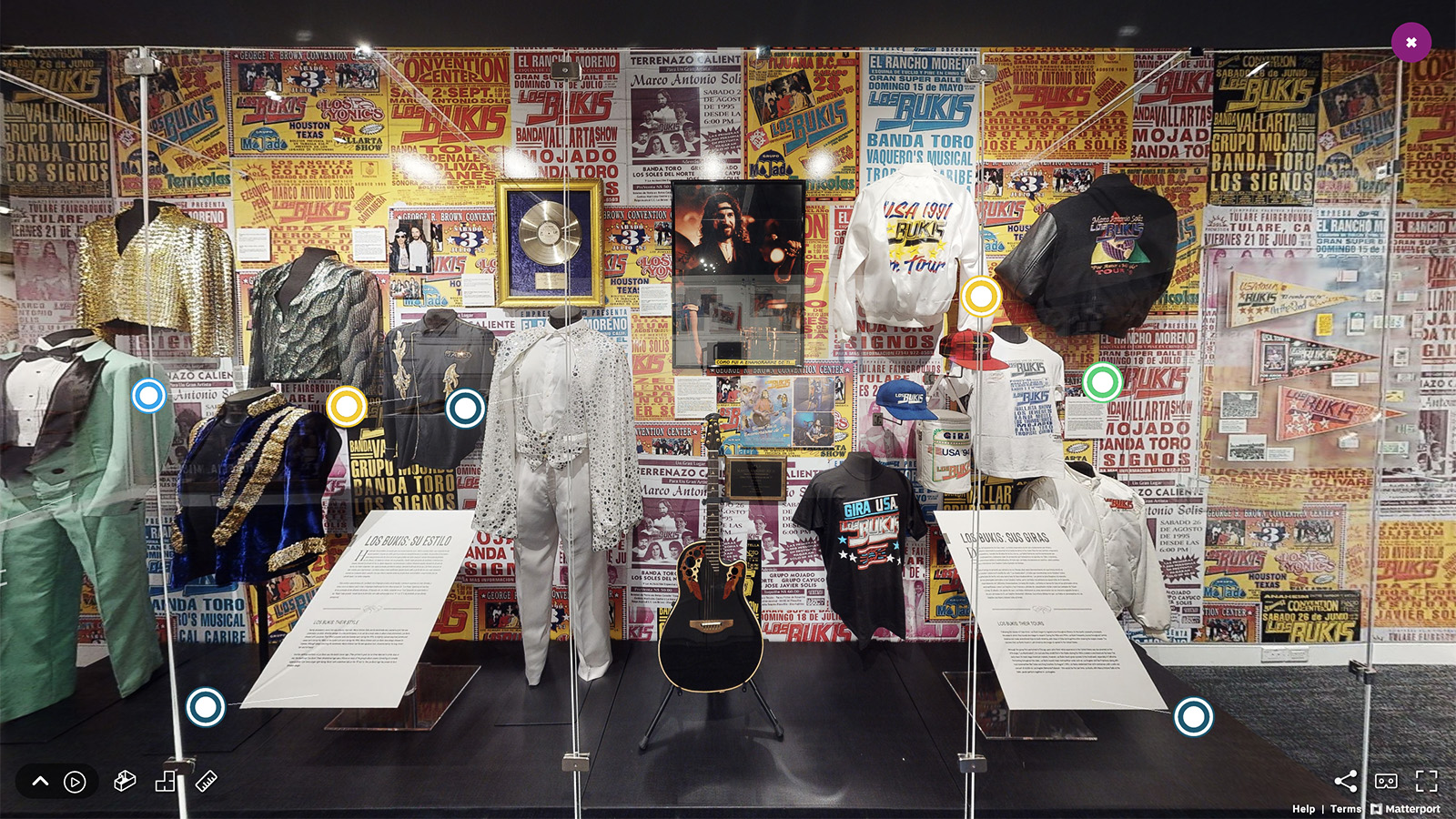Billed as an institution dedicated to preserving “the enduring legacies of all forms of music,” the GRAMMY Museum has been no stranger to multimedia storytelling. By design and necessity, the LA-based venue (with outposts in Mississippi, Nashville, and Newark) has leveraged digital tools like onsite touchscreens, Spotify playlists, and a streaming platform, Collection:Live, to deliver content in a form that encapsulates the many dimensions of its subject. And just last week, the institution added more to its virtual programming to expand the scope and reach of its digital presence.
What happened

Created with Matterport, the GRAMMY Museum’s 3D tours include object descriptions, audio hotspots, curator-led videos, and shoppable links to purchase merchandise. Image: Motown: The Sound of Young America virtual tour at grammymuseum.org
Following its COVID-era Museum At Home line-up that included online exhibitions and educational videos, the GRAMMY Museum now boasts a set of virtual tours, which users can access from their desktop or devices. Currently on view are immersive tours of exhibitions including Motown: The Sound of America and Dave Matthews Band: Inside and Out, where visitors can navigate the 3D space, get an eagle’s eye perspective of floor plans, or zoom into artifacts for detailed descriptions.
Created with Matterport, each experience also features audio hotspots, curator-led videos, and shoppable links to purchase merchandise. The Y Para Siempre… Marco Antonio Solís tour, in particular, includes an exclusive walk-through video with the Mexican musician himself.
The above effort to grow the organization’s digital audience also includes the GRAMMY Museum’s own streaming service Collection:Live. Launched over 2020’s lockdowns, the platform offers subscribers access to exclusive performances, livestreams, artist interviews, and the institution’s archival material — and as of last week, has been made entirely free for all.
Why it matters

Now free for all, Collection:Live, the museum’s streaming service, features a host of exclusive video material and is available on all major streaming platforms. Image: Collection:Live
The GRAMMY Museum’s refreshed virtual presence reflects on the one key lesson picked up over the pandemic-related lockdowns: that cultural institutions have doors beyond their physical ones. Digital has become imperative as venues from the Academy Museum to the Louvre have made their digital offerings permanent fixtures, all the better to bolster their storytelling and capture demographics across geographic divides.
Such projects also mark a commitment toward sustaining audience engagement and accessibility beyond lockdowns, especially since in-person participation remains a dicey prospect. While the post-pandemic future of virtual programming is still in question for smaller museums, institutions with the necessary resources, it seems, are planning for an ongoing and growing digital slate.
What they said
“Throughout the past several years, we’ve developed and executed strategic priorities to elevate the experience that is the GRAMMY Museum… as we did at the beginning of the COVID pandemic, we’re continuing our growth in the online digital space to allow those not in Los Angeles to experience our museum and programs.” — Michael Sticka, President and CEO, GRAMMY Museum



